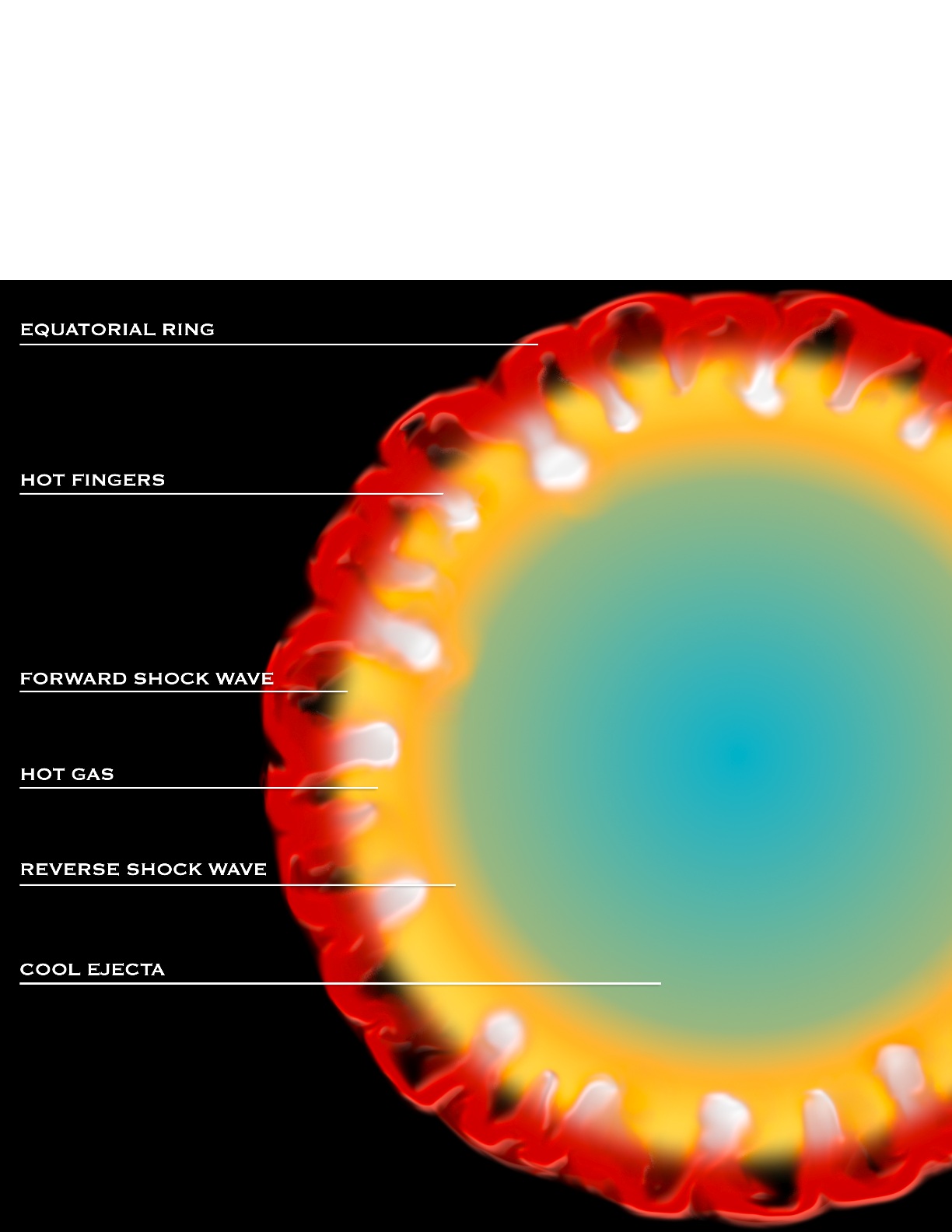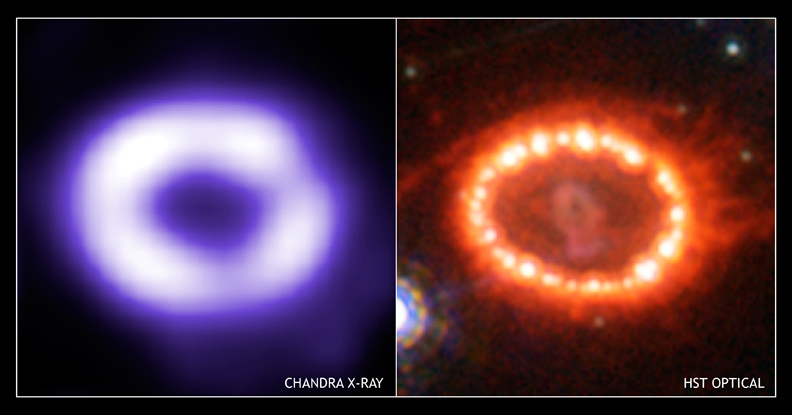http://chandra.harvard.edu/photo/2005/sn87a/index.html
- Editor
Recent Chandra observations have revealed new details about the fiery ring surrounding the stellar explosion that produced Supernova 1987A. The data give insight into the behavior of the doomed star in the years before it exploded, and indicate that the predicted spectacular brightening of the circumstellar ring has begun.
The supernova occurred in the Large Magellanic Cloud, a galaxy only 160,000 light years from Earth. The outburst was visible to the naked eye, and is the brightest known supernova in almost 400 years. The site of the explosion was traced to the location of a blue supergiant star called Sanduleak -69º 202 (SK -69 for short) that had a mass estimated at approximately 20 Suns.
Subsequent optical, ultraviolet and X-ray observations have enabled astronomers to piece together the following scenario for SK -69: about ten million years ago the star formed out of a dark, dense, cloud of dust and gas; roughly a million years ago, the star lost most of its outer layers in a slowly moving stellar wind that formed a vast cloud of gas around it; before the star exploded, a high-speed wind blowing off its hot surface carved out a cavity in the cool gas cloud (Figure 48).
The intense flash of ultraviolet light from the supernova illuminated the edge of this cavity to produce the bright ring seen by the Hubble Space Telescope (Figure 47). In the meantime the supernova explosion sent a shock wave rumbling through the cavity.

FIGURE 47: Chandra X-ray (blue) and Hubble optical (red) composite of Supernova 1987A. Credit: X-ray: NASA/CXC/PSU/S. Park & D. Burrows; optical: NASA/STScI/CfA/P. Challis.











